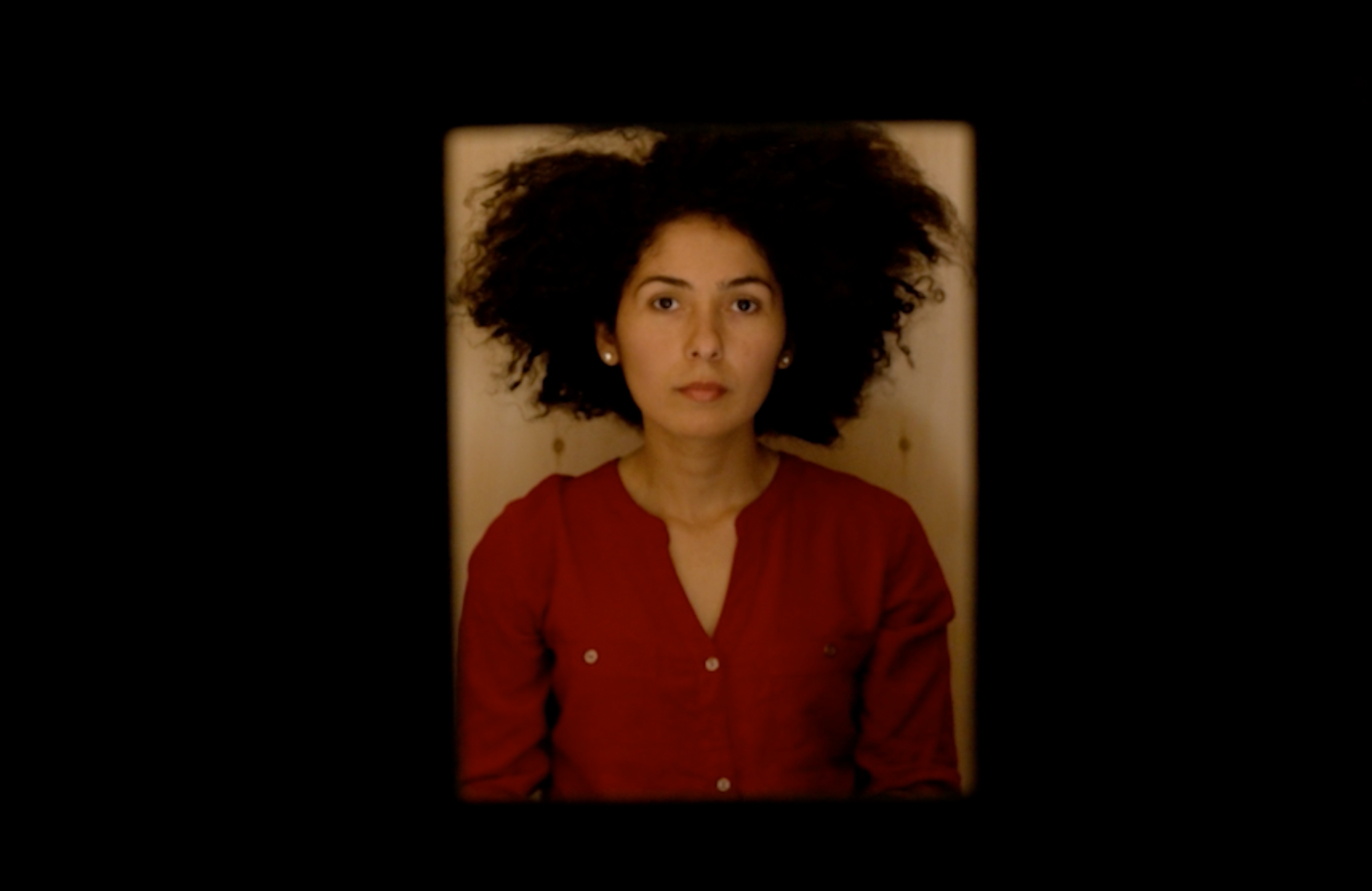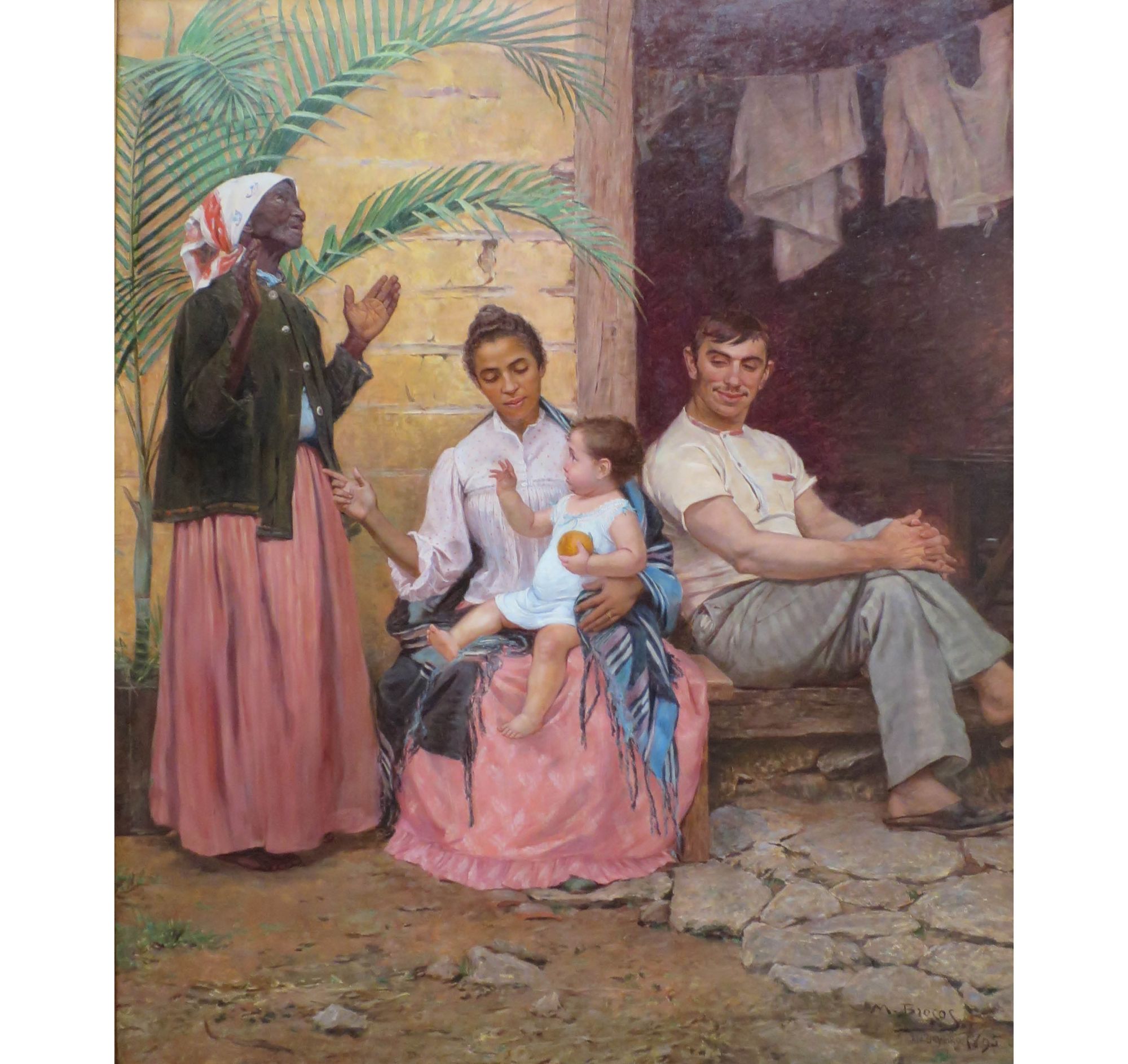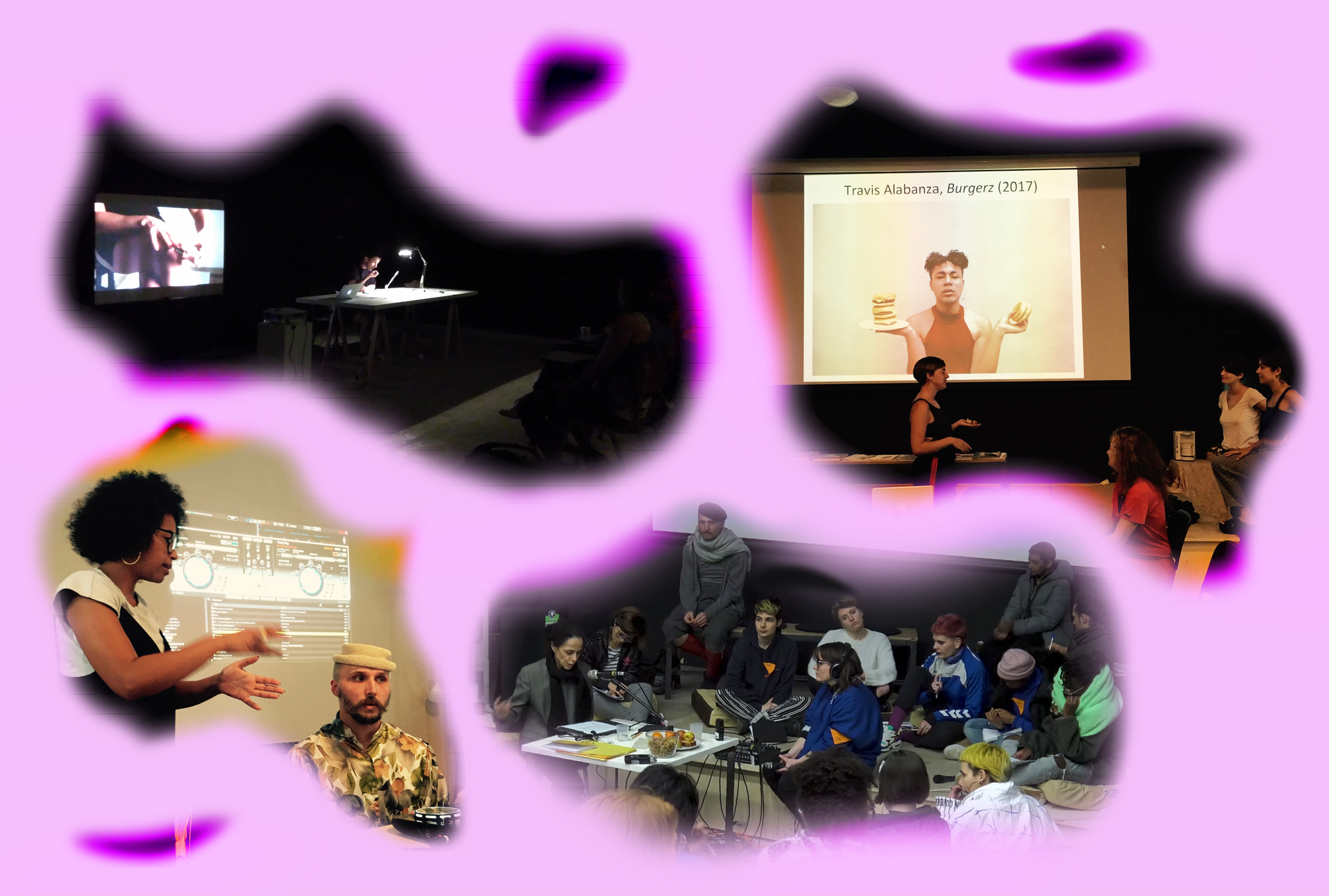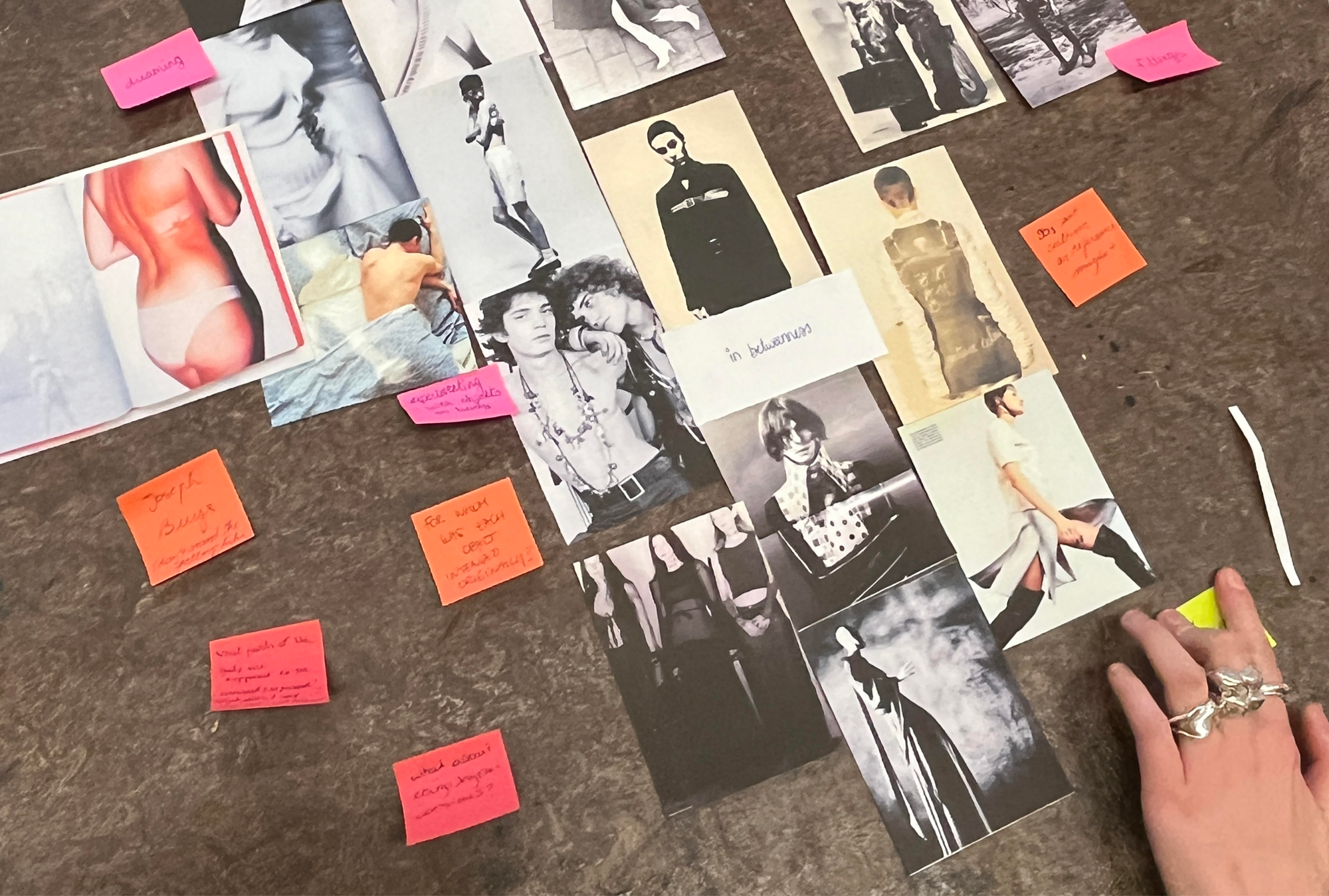
From as far back as I can remember, I woke up to the unforgettable voice and vision of Xuxa, Brazil’s blond-haired, blue-eyed children’s TV host. As a lonely child from a small city lacking role models, television was the gateway to a world of possibilities. Every morning, Xuxa sang and twirled and danced with a cheerful squad of paquitas, a group of blond white girls dressed in micro-shorts, large boots, and funky caps—themselves carbon copies of Xuxa, a former top model of German and Italian descent. Together, Xuxa and the paquitas shaped my ideal of femininity. I couldn’t understand what made me so different from them. I believed it was most likely my curly hair, which I hated. It wasn’t straight and shiny like my mother’s, but as voluminous as a lion’s mane—juba de leão—the nickname my classmates used to bully me for years.

In Brazil, the obligation to register the race or ethnicity of a newborn was only overturned after the dictatorship ended and the country enacted a new constitution in 1988. Still, it remains an optional information field in birth registries across the country. Although my birth certificate states that I am white, I’m often perceived as parda, the term used by the Brazilian Statistics Institute (IBGE) to designate those who identify as being neither white nor Black, but something in between. In the extremely racist Brazilian context, straightening my hair was a way of fading into the background and “passing” as white to escape discrimination.
“Although my birth certificate states that I am white, I’m often perceived as parda, the term used by the Brazilian Statistics Institute (IBGE) to designate those who identify as being neither white nor Black, but something in between.”
According to IBGE’s latest National Household Sample Survey, the number of people who identify as pardos has grown significantly between 2012 and 2021, from 45.6% to 47% of the Brazilian population. Meanwhile, the amount of people who identify as white has decreased from 46.3% to 43%. The self-identification as pretos, the designation for dark-skinned Black Brazilians, has also substantially increased in the same period, from 7.4% to 9.1%. A superficial analysis of this data shows a migration of racial identification from the white to the Black spectrum, a demographic phenomenon driven by 15 million people, including me. Today, 56% of Brazilians—the majority of the population—identify as Black, IBGE’s racial category that includes pardos and pretos.
“To be beautiful, you must suffer,” said my aunt Célia, a professional hairdresser, to motivate me throughout the five-hour-long chemical hair-relaxing treatment I endured at least three times a year since the age of seven. The process started with using brute force to detangle my hair. The rat tail comb used to emit a shrill sound like a sword as it swiped against every hair strand to subdue it into submission. Clank!—the comb, a colonizers’ weapon in a battle of sheer will and determination. Yet, despite the huge number of rebel strands that bowed in compliance on the battlefield, my hair triumphed in some heroic victories over its toothy opponent, which was left broken in two pieces, collapsed on the ground. After my aunt applied the acrylic solvent-smelling guanidine-based product, the pain brought me to countdown mode until I could run to the sink to wash away the chemicals. This “burning scalp” sensation of straightening my hair felt as painful as my first tattoo. But for the first five days that followed, I was radiant with the “blowout” effect, despite the blocks of hair glued to my scalp due to second-degree burn wounds.

My story is by no means unique. According to research by L’Oréal Paris cited in 2018, 45% of Brazilian women have naturally curly hair, but only 13% of them wear it this way. This is unsurprising; after all, the country originated the global phenomenon of what is known as “the Brazilian Blowout.” The formula was invented in 2005 by a mortician who noticed that the formaldehyde used in the embalming of bodies caused the deceased’s hair to straighten. Despite its lingering popularity, the treatment is now considered highly unsafe by the U.S. Food and Drug Administration, and in other countries the formula is highly regulated or even banned. White ideals of beauty are further expressed by hair coloring, a crucial factor driving the country’s beauty market—the fourth largest in the world. According to Premium Beauty News, 70% of Brazilian women have blond hair, but only less than 20% of these are natural blondes. In a study published in 2019, U.S. scientists revealed that the frequent usage of permanent hair dye or chemical hair straighteners can increase the risk of developing breast cancer by up to 30%—an alarming figure, considering the popularity of these products among Black women.
When I reached pre-puberty in the late 1990s, my mother stopped brushing my hair before school, and I started experimenting with different hairstyles. Inspired by the Spice Girl Mel B, the first Black woman I admired, I decided to go to school with my hair loose, unaware that my styling creativity would lead to the worst day of my life so far. While walking down the streets of my neighborhood, children immediately started harassing me. I could hear their whispers and laughter growing in intensity until I reached the school gate, and I don’t even remember what happened next—just that sinking feeling of shame. From that day on, I never wore my natural hair loose again until I was an adult.
“I realized I was being racialized. Hair was the truth serum that unveiled people’s prejudice.”
As a 20-year-old college student living on a budget, I was unable to find any affordable cruelty-free products, so my curly hair root eventually uncoiled, reverting to its natural state until it felt cozily smooth. As I eventually stopped applying chemicals to my hair, I was confronted with more and more incidents of discrimination. Strangers I encountered on the street would yell, “Brush your hair!” On two separate occasions, I was even interrogated by doormen because I “didn’t look like an undergraduate student.” When visiting a friend in an upper-middle-class neighborhood in the Brazilian city of Rio de Janeiro, I was asked if I was the new housekeeper. At first, I thought I just looked poor, but later I realized I was being racialized. Hair was the truth serum that unveiled people’s prejudice.
This racism is, of course, nothing new in Brazil. For three decades, Afro-Brazilian intellectual, feminist, and activist Lélia Gonzalez wrote about the injustices faced by Black people in the country. She brought attention to the importance of the Black female workforce since the days of slavery, and how, historically, Black female workers had the most degrading occupations. According to Gonzalez, the requirement for “having a good appearance” in job descriptions—which actually meant “being white”—could explain the absence of dark-skinned women in customer-facing jobs historically dominated by (white) women. Today, Black women earn less than one third of what white men earn, and 80% of the country’s employed Black women perform manual labor, half of them as housekeepers.
“Young Black women are sexualized for rich white men’s pleasure, a process that has its roots in slavery, and still prevails today.”
Next to housekeeping, Gonzalez highlighted another category that has been socially attached to Black women in Brazil: mulata. This problematic term whose etymology arguably goes back to the word “mule”—a sterile animal resulting from the breeding between a horse and a donkey—has a secondary meaning: that of a sexual “export commodity.” Young Black women are sexualized for rich white men’s pleasure, a process that has its roots in slavery, and still prevails today. Unsurprisingly, when I immigrated to study in Germany in 2013, many people in Brazil believed I was going to be a sex worker.
During all these years of going back to Brazil on holidays, I noticed a changing cultural perception around naturally textured hair. In 2015, a mail carrier surprised me by saying I looked “like an artist.” One year later, the first products for transitioning from chemically relaxed hair back to its natural curl started appearing on the Brazilian market. Instead of laughable, curls and afros were now “cool” and “trendy.” It seemed like Black beauty was finally starting to have a place. That same year, president Dilma Rousseff was wrongly impeached, and at that point, I still believed the country was on the right path towards facing historical traumas and finding reparations for slavery. However, white supremacists then assumed power for the next seven years, endangering the most basic human-rights victories achieved in three decades of our fragile democracy. With the recent defeat of far-right president Jair Bolsonaro, I hope I won’t be yelled at again when next I travel to Brazil.
“Here [in Germany], as a woman socially perceived as Gonzalez’s mulata, I am charged with a stereotypical ‘Brazilian-ness,’ which is highly sexualizing, objectifying and dehumanizing.”
When I first moved to Germany, white Germans were confused: “Is it a wig?” “Is it natural?” “May I touch it?” Initially I would take it as a compliment, and consent. But some wouldn’t even ask. Once, at a train station, an old lady with a mysterious smile touched my hair. Suddenly, I could see evilness in that puerile gesture. Despite not being obviously aggressive, that experience was just another violent embodiment of racism. “I thought Brazilians like to be touched,” said a Spanish woman, after trying to physically interact with me at a party in Barcelona, Spain. But my white Brazilian friends haven’t been approached the same way by strangers in Europe. Here, as a woman socially perceived as Gonzalez’s mulata, I am charged with a stereotypical “Brazilian-ness,” which is highly sexualizing, objectifying and dehumanizing.
Despite praising its efforts of denazification, Germany hasn’t yet managed to address its Nazi legacy. The oft-repeated slogan “Never again!” doesn’t translate to the lived reality, where different forms of racial violence still systematically take place. Two people in Halle were killed by white supremacist attacks against local synagogues in 2019, and nine people in Hanau in 2020. That same year, there were 901 attacks against Muslims and mosques, resulting in two deaths across the country. Recently, a Black man died at a hospital three weeks after being brutally captured by police officers in Berlin. Despite this reality, the usage of the German term for race, Rasse, is still heavily contested in the country. Unlike Brazil, Germany does not collect racial identity information in official documents, which results in a lack of statistical data to shed light on racism.

During my five years at a German university, I continuously felt “othered.” White Germans most commonly react to people like me either by staring or looking away—a common tactic to conceal the discomfort caused by our presence, surreptitiously unveiling the effort it takes to deny our humanity. This white supremacist desire of erasing Black existence is embedded in the design of institutionalized mechanisms of access and control, for example the recidivism software used by law enforcement in the U.S.A. According to an investigation by ProPublica, these risk assessment algorithms, which are used to predict the likelihood of future crimes, deemed Black individuals more risky than white individuals with similar previous criminal records. Other examples of algorithmic discrimination are facial recognition software that cannot recognize dark-skinned people, and Google’s image classification engine that categorized Black people as not being humans.
In my first couple of years in Germany, I witnessed one of these biased machines in action. While waiting in line at the consular section of the Brazilian embassy in Berlin, I saw a Black woman crying, while the white attendant tried to justify herself. “Believe me, it is not racism,” she insisted. Clearly uncomfortable, she continued: “Our digital camera doesn’t take good photos of people with your skin tone. It has been configured this way; I can’t do anything.” Unable to understand her role in participating in the government office’s default racial discrimination, the white woman left the humiliated Black woman to her own devices.
Observing this episode encouraged me to write the script for Parda, a short film released in 2019 that mixes documentary and fiction to reflect on the boundaries of Blackness. The plot takes place in a dystopian future in which a racist government in Brazil forces all white Brazilian citizens living abroad to return home, unite, and build a powerful country together. As a person to whom the white race was officially assigned at birth, I investigate the many shades between white and Black identities. Despite being classified as a “very personal movie” by white Germans, Parda resonated with the experiences of many racialized women from Latin America and throughout the African diaspora. During the director’s Question & Answer session, we were able to share our frustrating experience of being part of two worlds, while belonging to none of them.
Denying the beauty and strength of the Afro-Brazilian past and present is the most efficient way of attaching us to ideals of whiteness. To fight back, we need to rescue our own history. Gonzalez reminds us that the first independent State in the colonized Americas was the Black Republic of Palmares, also known as Quilombo dos Palmares, a community formed by runaway enslaved workers who resisted Portuguese and Dutch attacks for at least one century, housing a population of up to 20,000 people. Although Palmares was violently exterminated, many quilombos continue to resist to this present day as independent territories preserving Afro-indigenous communities and their ways of being—including ideals of beauty. According to the IBGE, there are currently 5,972 quilombos in Brazil in 24 of the 26 federation states, but only 4% of them have legal rights to their land.

For Gonzalez, the Black identity in Brazil is deeply shaped by two contradictory concepts. The first is the myth of the country being a “racial democracy,” an idea first articulated by sociologist Gilberto Freyre in the 1930s that posits that Black and white live in interracial harmony, which is further supported by images of football and Carnival—events in which social hierarchies are often reversed. On the other hand, this concept goes directly against the multiple governmental efforts to attract white European immigrants to Brazil mainly between 1890 to 1930, which were highly influenced by eugenic theories of white superiority. According to Gonzalez, 150 years ago the first census showed that the majority of the Brazilian population was Black, leading many scholars to believe that the miscegenation with white European immigrants was the only chance to “whiten” the country and thus save it from underdevelopment.
“The world where I grew up was white by default. Television taught me to admire whiteness and pity the characters that looked like me.”
Although this whitening policy failed, writing in the 1980s, Gonzalez believed that it remained effective ideologically, generating what she described as the “projection of Brazil as a racially white country and culturally European.” In fact, the world where I grew up was white by default. Television taught me to admire whiteness and pity the characters that looked like me, enslaved people in historical telenovelas and the housekeeping staff in the contemporary plots—the sole acting opportunities for Black actors.
In order to fulfill the dream of being one of Xuxa's paquitas, young girls had to bleach their hair to match the show’s normative blondness. In the over 2000 episodes of Xuxa’s programs since its inception in 1986, there had never been an Afro-Brazilian paquita. In 1996, however, Xuxa hired the Black dancer Adriana Bombom to perform in her show Planeta Xuxa (Xuxa’s Planet). Bombom danced in front of the show’s teenage audience to popular Brazilian rhythms such as pagode, axé, and funk carioca. Although she wasn’t a paquita like the others, and she was the only Black girl on the stage, she didn’t seem intimidated by Xuxa’s white, blond-haired assistants. With natural hair, dark skin, cheerful dance moves, and charisma that radiated through the screen, she made the most out of her limited airtime to build a career as a performer. Despite not being the protagonist, her presence caused otherness by contrast, and worked to reprogram our gaze by applying weekly drops of Black beauty and Black joy. For some of us, though, it took many years before this treatment took effect. For many others, we remain frazzled by our own self-image, our rebels entangled in colonizers’ weapons on the battlefield of the whitewashed world.
Tai Linhares (she/her) is a Brazilian designer, filmmaker, visual artist, and coding enthusiast living in Germany. She has a master’s degree in Media Studies from the Federal University of Rio de Janeiro (UFRJ), and also studied Journalism at the same institution and Computer Sciences at the Technical University of Berlin (TU Berlin). In her latest art project called “named after Men”, she uses python programming to develop a story telling framework that helps to identify relationships between botanical sciences and colonialism. Her last short film, “Mixed Race” (Parda, 2019), is an essay that reflects about racial issues in her country of origin, mixing documentary and fiction story telling techniques. The film has been screened all over Brazil in the Mostra SESC de Cinema and has been featured in festivals in Germany, Portugal, Finland, Sweden, Ecuador, China, and Poland. Some of her topics of interest are fairness, sustainability, and decoloniality.
Title image: Childhood photograph of Tai Linhares (Source: Still from Tai Linhares' short film “Parda”)
The title of this vertical, Vulnerable Observers, is an homage to anthropologist and author Ruth Behar and her book “The Vulnerable Observer: Anthropology That Breaks Your Heart.”















